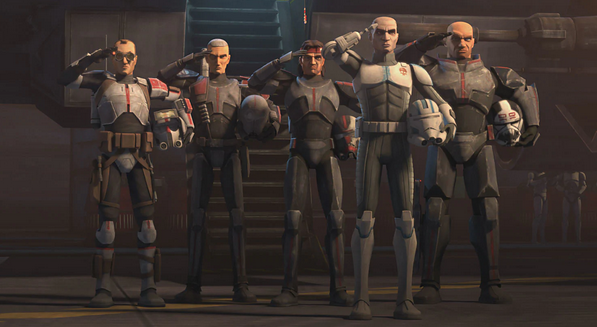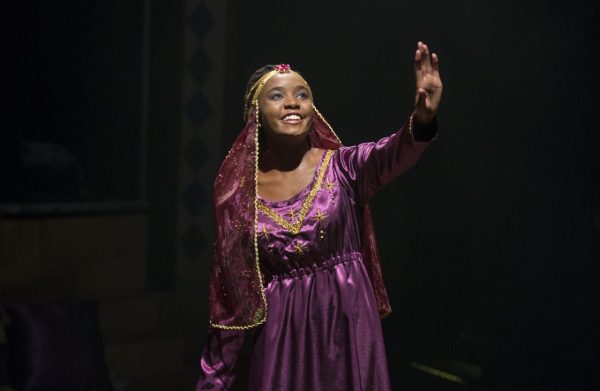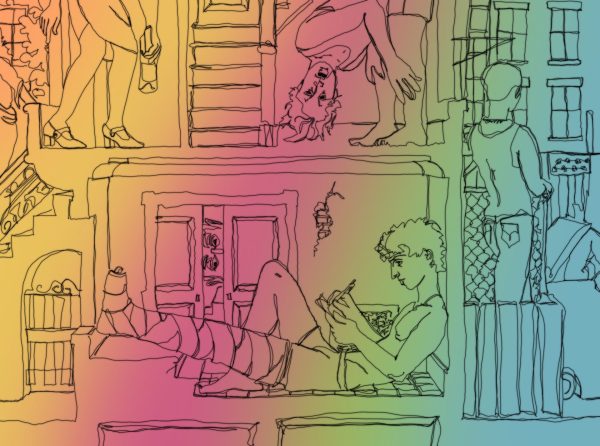REVIEW: New ‘Star Wars’ animated spin-off ‘The Bad Batch’ just misses being bad

Still from “The Bad Batch.”
“Star Wars: The Bad Batch” isn’t a bad TV show. It’s hard to be in a post-“Mandalorian” world where every “Star Wars” property now lives in its shadow. And “The Bad Batch” isn’t quite as good as the animated “Clone Wars” TV show either. “The Bad Batch” obviously wants to carry on the previous show’s legacy, but it just isn’t as compelling. There are only three episodes, and there are allegedly supposed to be 14, so by the end of the series, the showrunners could prove me wrong.
The third episode was released on May 14 and came in at just under 28 minutes — which is much more reasonable than the premiere’s dragged-out hour and 15-minute runtime.
The series falls into the same trap that the live-action “Star Wars” prequels do. There’s a lot of political talk and exposition, with not enough lightsabers and blasters. Not that it would be bad for a “Star Wars” property to be narratively complex, but when I come into a “Star Wars” movie or TV show, I expect grand, tightly choreographed fights against fantastical backdrops.
“The Bad Batch” does have some of that. The sweeping opening battle scene wouldn’t be out of place in a regular “Star Wars” movie. The world animation is amazing; one scene from Episode Two pops out in particular. Omega, one of the main characters, sees a planet made of dirt for the first time, and she falls to her knees to touch it, exclaiming in delight. She’s framed in a patch of golden light, where you can see flecks of dust drift into and out of the beams. This is where the animation shines. The animators’ strength is in the natural elements of the planets, like leaves, dirt and downpours.
The characters seem meticulously hand-drawn, yet computer animated at the same time, which is a style I find visually gratifying — specifically in the close-ups, where the characters really come to life.
As far as character development goes, everyone so far is pretty one-dimensional. Our protagonist group plays like they were picked from a “spin-the-wheel of clichés.” A mysterious, quiet outsider of the group with a gnarly facial scar, a capricious and curious young girl with a troubled background, a nerdy stats guy with a British accent and a stoic male action lead who secretly has a heart of gold.
Character development and plot are equally important in my eyes, so I wish they had chosen to flesh out the charters or make them feel less lazy. In these first few episodes it seems like the showrunners are focusing hard on pushing the plot at the detriment of other aspects of the show.
“The Bad Batch” might be too slow and exposition-heavy for kids, but too soft for adults. Even if they just sped up the dialogue, it could be more captivating. There were places where the dialogue could have been like banter, but instead moved at a near glacial pace — particularly in the first episode.
The show can’t decide if it wants to appeal to casual viewers or if you need to understand the lore of every single “Star Wars” spin-off. At the very least, watching “The Clone Wars” before this will probably enrich your experience.
If “The Bad Batch” could make up its mind about its intended audience, it could have made a thought-provoking statement on cloning and free will. At several points the script gets close but seems too afraid to push it there.
But I’m not mad at it. I think we’ve all been spoiled by recent Disney-owned spin-offs like “The Mandalorian” or “WandaVision.” Because of these spin-offs we now know that heavyweight media conglomerates don’t have to push out thin stories to keep us interested.














